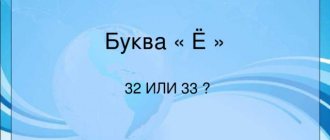What is the National Teacher Development System?
The history of the National System of Teacher Growth (or NSTS) stretches back to December 2020, when Russian President Vladimir Putin ordered the development of a system designed to test the competencies of a modern teacher and create a mechanism to promote the career growth of teachers.
Officially it is said that the NSSD should provide an objective assessment of the knowledge and skills of teachers, simplify the certification procedure and provide an updated classification system for teaching positions taking into account the requirements of the time.
The development of the system is associated with the end of the transition period for the introduction of professional standards for teachers. Accordingly, mandatory certification of teachers is associated with the transition to the use of professional standards.
One of the innovations is the emergence of the positions of senior and leading teacher.
And one of the main elements of the NSDS is unified federal assessment materials
(EFOM). These are the basic rules for certification of teachers: now, instead of different rules in different regions, certification will be carried out according to uniform rules throughout the country.
It is expected that the EFOM will allow teachers to be assessed according to uniform requirements for the whole of Russia, and to assess their competencies - subject-matter, methodological, psychological-pedagogical and communicative (accordingly, certain assessment materials are provided for each block of competencies).
The main goal of the NSDS was to improve the quality of teachers’ work and the level of their responsibility for the results of their work. All this is broken down into several separate tasks
:
- The professional growth of a teacher should occur throughout his entire career;
- an effective contract is implemented. In short, this is the linking of the level of remuneration of a teacher (incentive part) to specific indicators of his activity, most of which are expressed quantitatively;
- the main criterion for growth is professional standard;
- teacher certification should move from control to development, etc.
In other words, the NSSD should make teachers into professionals who organize their activities taking into account the achievements of science and pedagogical experience
. With all this, the NSDS should not become a mechanism imposed “from above” (but in fact it turns out that its measures are actually introduced without fail).
In fact, it all comes down to two main activities: the refinement and implementation of professional standards for teaching staff, and the introduction of a new teacher certification system. And it raises the most questions among teachers
exactly the second point.
How is certification carried out according to the old rules?
According to the rules that are still in force, the procedure for certification of teaching staff is stipulated by order of the Ministry of Education and Science No. 276 of April 7, 2014.
There are two types of certification of teaching staff:
- certification to confirm compliance with the position held. All teachers undergo it once every 5 years (with some exceptions);
- certification in order to establish a qualification category: first or highest. This certification is completely voluntary.
For the first type of certification (for compliance with the position held), a special certification commission is created at the school. It includes school teachers and may include representatives of the governing body and trade union organization.
Until uniform rules are introduced throughout Russia, the certification process is stipulated by the relevant Regulations in each school
(example). Such certification includes a written test in the form of an exam. It contains questions regarding regulations in the field of education, the theoretical foundations of the subject being taught, teaching methods, pedagogy and psychology, and information technology.
Do not pass this certification
can those teachers who:
- already have a qualification category;
- have been working in their position for less than 2 years;
- pregnant women and women on maternity leave, child care leave;
- Absent from work for more than 4 months due to illness.
The second type of certification is more complicated. If the school is under the jurisdiction of the Ministry of Education, then the certification is organized by the Ministry, and if it is under the jurisdiction of a region or municipality, then by the state authorities of the region (regional Ministry or department of education).
This certification is voluntary for teachers.
and is carried out upon their application to the certification commission. In total, the commission has no more than 60 days to carry out the certification and make a decision.
The rules by which certification is directly carried out can be found on the websites of local legislative assemblies or in systems like “Consultant.Plus”, “Garant”, “Code” and others.
During certification, a teacher can receive the first or highest qualification category. At first, you can only get the first category, and no less than 2 years later - the highest (subject to certification).
The differences in requirements are:
- for the first category, it is required that students demonstrate stable positive results based on the results of monitoring, they develop abilities for scientific, creative and sports activities, and the teacher himself makes a personal contribution to improving the quality of education, etc.;
- the highest category is assigned if students have positive progress in their academic performance, they participate in olympiads and competitions, the teacher actively participates in the work of pedagogical associations, competitions, has made a personal contribution to improving teaching methods, etc.
In fact, the certification procedure may differ from region to region. As a rule, teachers have to collect a portfolio
(awards, gratitude and other incentives), collect characteristics, etc.
But all this needs to be done, since after receiving a higher qualification category, a teacher can qualify for a higher salary, the opportunity to receive a classroom management, the right to manage an office and other preferences.
The first or highest category is assigned for a period of 5 years; they cannot be extended (only to undergo certification again).
What information to include in your portfolio
The first qualification category is established in accordance with the results achieved:
- based on the results of monitoring students’ mastery of educational programs;
- based on the results of identifying students’ development of abilities for intellectual, creative, physical education and sports activities;
- on personal contribution to improving the quality of education, optimizing teaching and educational methods, transferring experience of the practical results of their professional activities, active participation in the work of methodological associations of teaching staff of the organization.
The results of activities in these areas are collected in an individual folder, which contains information on personal professional achievements, the results of training, education and development of students, the teacher’s contribution to the development of the education system over a certain period of time and participation in the public life of the institution.
How it will work under the new rules
In 2020, major changes are expected in the field of general education. In addition to additional payments to teachers for classroom management, the certification procedure for teachers may change starting this year. In fact, the system was already in operation - it was tested in several regions of Russia. From 2020 it may become mandatory for everyone.
The new certification system is designed to eliminate the shortcomings of the existing model: to free teachers from excessive reporting and formalism. Now, as stated above, the qualifications of teachers will be assessed on the basis of the ETF.
The most important thing is that an assessment system of three blocks is being introduced:
- written work on the subject. This will not only test the teacher’s knowledge in the subject he teaches, he will also be asked to find an error in the student’s decision, help correct it, adequately evaluate the work, draw up a lesson plan, etc. As part of the testing, 2 hours were allotted for this block;
- analysis of a sample of a teacher’s professional activity.
This was supposed to be a video recording of a lesson, which would then be viewed by independent experts and give their assessment of the teacher's skills. The video will be accompanied by a lesson plan and samples of student test work. The most questions arose with this block - teachers were worried about the rights of children, worried about technical issues, and simply did not know how to organize it all. According to some information, the video recording of the lesson in the final version of the EFOM may be abandoned - including for the reasons listed above. - solution to a pedagogical case. This is a solution to a complex real-life situation that will require the teacher to apply all of his or her skills. You may need to take this part using a computer.
For all 3 blocks, it is expected that teachers will be allocated a certain time (with a set schedule, on which days what can be taken).
But that is not all. EFOM (that is, the 3 listed blocks) is only a maximum of 60 points out of a possible 100
. Other factors will be assessed:
- graduate success – 20 points;
- individual achievements – 15 points;
- conditions of professional activity – 5 points.
However, again according to unofficial data, they eventually decided to abandon the assessment of the success of graduates. Perhaps the reason is that they are very difficult to evaluate more or less formally.
Most likely, the teacher will take the first EFOM exam immediately upon arriving at his first job - this is the so-called “entry into the profession.”
In fact, the scheme is much more complex:
As you can see, after the first 3 years of work
The teacher will also take the EFOM. After 5 years - another exam, plus other points. Instead of the opinions of graduates, the opinions of students will be taken into account (which is logical due to the teacher’s experience). After 5 years, he will be able to take the EFOM again and receive the first qualification category, and then the highest category.
Accordingly, the new certification rules will actually combine two types of certification and bring them into a single system. However, it is worth understanding that this is all a project, and in reality the certification procedure may be slightly different.
In addition, it is not yet clear exactly how the passage of the new certification will affect the level of remuneration of teachers
. It is likely that the system will be left the same (with additional payments for categories), but the goal of the NSDS is the transition to effective contracts (which imply a clear dependence of remuneration on results).
As for the deadlines, they are as follows in the “road map” of the Ministry of Education and Science:
- in January-June 2020: final testing of the new teacher certification model;
- in June-November 2020: conducting a comprehensive study of the level of qualifications of teachers;
- in June-November 2020: creation of a database with a list of teacher competencies.
That is, certification under the new rules may begin as early as June of this year. But still, the “road map” is only an indicative plan, and they can deviate from it.
Portfolio structure for a primary school teacher
Portfolio structure.
Information sheet
- Full name
- Date of Birth
- Education information
- Position held
- Category
- Teaching experience
- Work experience in this institution
- Information about advanced training
- Availability of awards and certificates of all levels (municipal, regional, Russian)
Attached are copies of certificates, diplomas, letters of gratitude.
Introduction. Explanatory note
- goal of the portfolio
- tasks
- brief description of sections
I. The quality of subject training and children's health.
I .1.Positive dynamics of educational achievements
- Table of dynamics of training quality indicators for the period... last 3 years
- graph showing dynamics
I .2.Children’s achievements according to external certifications of various types
- Table of dynamics of indicators of the quality of student learning for the period ... last 3 years
- graph showing dynamics
- your own monitoring tables, for example, on reading technique, using various parameters with the presentation of tables, graphs, and analytical information.
I.3 . Achievements of children in olympiads, competitions, research work
- in the table by columns:
Year
F.I. student
Event
Participation level
Result
I.4 . The use of health-saving technologies to solve the problems of preserving and strengthening the health of students when organizing the educational process
- analytical report on the results of diagnostic studies: what activities are being carried out to improve the health of children, to prevent injuries, etc. Can be presented in the form of diagrams, graphs
II. Level of professional training of the teacher
II.1 . Orientation in specialized and popular science literature
.
Implementation of an individual approach to a creative personality and its development
- System of working with gifted children
- Multi-level approach to students' mastery of the educational program
II.2 . Availability of ICT competence of the teacher
Using the interactive capabilities of the information space
- Use of information technology
- creating your own presentations for the lesson
- creation of presentations by children and presentation form
- use of interactive capabilities of the information space (examples can be given, for example, lesson stages, examples of integrated lessons, etc.
II.3 . Organizing your own teaching activities, taking into account the individual characteristics of students
- program, list of types of work, analytical report on working with “at-risk” children, frequently ill children, and low-achieving children
- use of individual and group training technologies
II.4 . Training
Availability and degree of implementation of an individual educational program for advanced training (advanced training courses with the name of the program, certificate number). Enclosed are copies of the IDs.
II I. _ Extracurricular activities of a teacher
III .1. Organization by the teacher of extracurricular activities within the framework of the taught subject
- extracurricular activities in the following areas: “Logic”, “Entertaining Russian language”, “I explore the world”, “Olympiad movement”
III .2.Organization of students’ activities in socially significant projects
- participation in the week “Parade of Sciences” - defense of research works
III .3.Organization of educational work in planned thematic weeks at the end of the quarter
IV . Scientific and methodological activities of the teacher
IV.1 . Presentation by the teacher of his professional achievements.
IV.2 . Work in the methodological association of the school (topic of self-education, plan of work on the topic, product, developments)
IV.3 .
Demonstration of your achievements through a system of open lessons for teachers of the school, city, region
IV .4. Speeches at scientific-practical and scientific-theoretical seminars, conferences, marathons; organizing and conducting your own seminars with a seminar program.
IV.5 . Availability of publications in specialized pedagogical publications, placement of copyright materials on the Internet
IV .6.Work on your own pedagogical (methodological) research
Conclusion (can be in the form of an essay)
What was discovered during testing of the system
The new certification model has been tested in Russian schools over the past 2 years. The most important thing to know about this is that in November 2018, Minister of Education Olga Vasilyeva announced that the department had decided to abandon video recording of lessons
, since parental consent must be obtained for this. They also refused to take into account the opinions of graduates.
Teachers who participated in testing the new system spoke about their impressions:
- the first 2 blocks of the EFOM were allocated 10-12 days, the last block - 4 hours;
- questions from the first block may relate not only to the subject. For example, the teacher is asked: if the classroom is equipped in accordance with the Federal State Educational Standard of General Education, what elements of the subject environment and how will he use it when conducting a general lesson in two different classes, etc.;
- Video recording of the lesson was allowed either in full (45 minutes) or in fragments of 15 or 30 minutes. It is allowed to film a lesson even on a smartphone;
- diagnostic work tested knowledge of the subject, psychology and physiology of children. In particular, the teacher was asked to develop an extracurricular activity or check the student’s work in accordance with the GIA criteria.
Testing was carried out in 104 schools in 19 regions of Russia
, a total of 619 teachers took part in it. All their proposals were promised to be taken into account in the final version of the certification system.
Most teachers throughout Russia have a negative attitude towards innovation. Of course, they promised to cancel the main irritant - the mandatory video recording of the lesson - but there were no complaints about the new system
there's still a lot left.
In particular, the following arguments are given:
- the procedure will distract teachers from their main job - teaching children;
- the very presence of many certification procedures may indicate distrust in the teacher and his professionalism;
- the new certification procedure is aimed not at the result (student knowledge), but at controlling the process (thorough knowledge of the Federal State Educational Standard);
- It is planned to involve experts to evaluate the work of teachers within the EFOM, but this is difficult: there are too many teachers, and the fact that other teachers can be experts raises questions about the objectivity of the process.
By place of publication they are allocated
1. An e-portfolio is created online. Often this is a teacher’s personal website, where he publishes all his developments, scenarios, descriptions of methods and techniques used in lessons, as well as reports, plans, etc.
You can create a teacher’s personal website yourself. Or you can open your account on the school website. Watch video tutorials on How to create a personal website for a teacher in uCoz.
Important! A portfolio created on your computer, but not posted online, is not electronic. Nobody sees it except you. So, this option is just a convenient replacement for the paper counterpart.
2. Paper portfolio . Of course, electronic documents must have a paper equivalent. There is no need to print out every sheet. It is enough if it is a concentrated squeeze of the most significant components of the portfolio.




